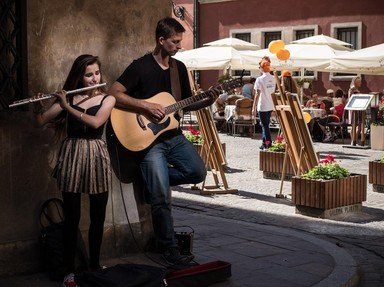Quiz Answer Key and Fun Facts
1. The sackbut was an early brass instrument that evolved into this
modern musical instrument.
2. This wooden flute-like instrument features a lip, a fipple, and a windway.
3. A type of psaltery or zither, the name of this instrument literally means "sweet sound".
4. This ancient woodwind evolved into the modern oboe. The metal band surrounding the bell made it a handy weapon as well.
5. Two instruments played simultaneously by one person, this combination was often used as accompaniment for juggling or acrobatic acts.
6. The primitive version of this instrument was operated by delivering heavy blows of the fist.
7. This stringed instrument is featured in many Elizabethan compositions. Often equipped with several courses of strings, its distinctive feature is a half-pear shaped back.
8. Also known as the "vielle a roue" or wheel-fiddle, this instrument features a wheel cranked by a handle. Early instruments required two players: one to push the keys and one to turn the handle.
9. This instrument is often called a cornett. It can play as loudly as a trumpet or can approximate the sound of a human voice.
10. This medieval flute-like instrument features a gentle, haunting sound. It is made from the horn of a sheep or ox.
Source: Author
belle_a_cello
This quiz was reviewed by FunTrivia editor
bullymom before going online.
Any errors found in FunTrivia content are routinely corrected through our feedback system.


